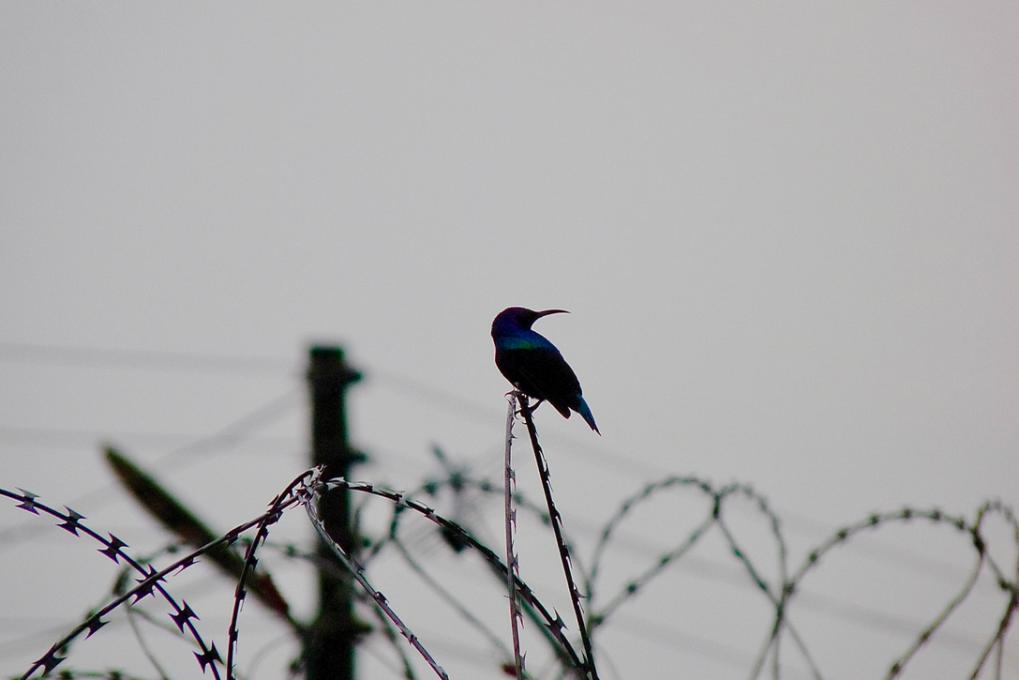The Cornell Lab Bird Academy › Discussion Groups › Joy of Birdwatching › Activities: Exploring Birds
-
Like many people I’ve gotten into birding since being home all the time during Covid, and starting to notice the natural world in my backyard. I have hung up bird feeders and am identifying birds I’ve never seen before because I never stopped and really looked at them. One of my favorites is the White-Breasted Nuthatch because it’s so lively and dances around on the tree trunks like a little sprite. I have a wonderful Hairy Woodpecker who has discovered my suet feeder, as well as some Ladder Backed Woodpeckers and a female Williamson’s Sapsucker who seems to live on one particular tree in my yard. The Sandhill Cranes picture is from a recent visit to Bosque Del Apache, which is basically bird heaven here in beautiful New Mexico. These birds have given me so much joy in these difficult times.



-
I saw these beauties while watching the sunrise off Pompano Beach in South Florida. Unfortunately, the Merlin Bird ID app did not help me identify them right away. So I dug into other references, finding hits in All About Birds, Audubon, and Birds of Southwest Florida. They are Black Skimmers. It was incredible watching them soaring back and forth across the beach, the entire flock moving as one, finally settling a few yards from where I was standing.
 The pigeon landed in the foreground just as I was taking the picture.
The pigeon landed in the foreground just as I was taking the picture. -
I recently put a bird feeder in a tree next to our patio and this has become my primary bird watching experience as we are rather homebound during the pandemic. Over the last week, I've been able to identify three perching bird species: (1) Black-capped chickadee, (2) black-eyed junco, and (3) spotted towhee. We also have a hummingbird feeder and have a steady line-up of Anna's. When we first put up the hummingbird feeder, I wasn't able to distinguish the family, they just looked like a tiny metallic green bird. It was when one turned his head toward the sunshine that I first saw the flash of crimson head and throat. I identified the chickadees using an old National Audubon Society Field Guide to North American Birds. I was already familiar with the juncos, but the spotted towhee is new to me, I hadn't seen it before we installed the seed feeder. While cleaning my patio this afternoon and getting ready for winter, I spent about two hours sweeping, moving flower pots, and cleaning all the while the chickadees didn't seem to mind, they continued to feed. At one point, I stood still just a couple of feet from the tree and just observed the feeding activity. They took from the feeder and flew off to another branch to work at their food. They are the most delightful birds, very active and surprisingly tolerant of other birds.
-
I was finally able to identify my favorite bird today! I've read about the ruby-crowned kinglet and how they can survive the bitterly-cold winters even though they are so small. I think they are more common in western Oregon now that it is late fall and today I saw one outside my window in my front yard. It reminded me of a wren at first, then I saw the black and white lines on the wings and white eye ring. The bird hopped around on a brush pile then, suddenly, it flashed the red crown feathers! It was near another kinglet who also flashed back - two males. What a treat! It was my first time recognizing this truly great little bird in the wild. I wish I had taken a photo, but I was too excited!
-
I had never even heard of the ruby-crowned kinglet before, but then spotted this unusual looking bird in a bush one day several months ago when I was walking a dog (I own a pet care business). After looking it up on some apps I found out what it was. I've never seen one again. So cute. I just signed up for this class with my friend this week. We have become bird watching buddies during the pandemic.

-
-
This Great Horned owl stays all day hidden in the depths of the tree behind our house, then takes off each night just about sunset. He puts on quite a show for us and our neighbors because he scoots out onto a branch about a half hour before flight and just hangs around. Take off is amazing, such huge wings!

-
That’s awesome! What luck to have him as a visitor.
-
@Alison Great Horns are beautiful Owls. You can bet something is peaking his attention !! Nice pic.
-
-
The first bird I was able to identify from my feeder last year, using my new guide book, was the Dark-eyed (Oregon) Junco, I loved watching it flick food out of the feeder then jumping down to the ground to eat it, thankfully I am seeing them again around my apartment, sadly I had to take down the feeder this summer as I was also attracting a large family of rats underneath my feeder and my landlord was not happy:( Every time I see a Junco, now, I smile and think of the start of my becoming a birder:)
-
I chose the Belted Kingfisher. I met a few kingfishers this summer-fall while kayaking on the Hudson River. They come across as quite the characters: chatty and bossy, but so fun to watch. At first, I had mistaken them for blue jays since it seemed--from a distance--in flight they have similar markings on their wings. In researching them for this activity, I discovered that what I thought was a male is actually a female. This is one of the few species where the female is more brightly colored than the male. She has a rust band or belt, whereas the male does not. They burrow into fairly deep holes. I also looked up the red-breasted nuthatch since I have two who have been spending a lot of time at our feeder since October. They are often around chickadees and titmice, and I wasn't sure if that was just our two, or a coincidence. But apparently this is common behavior. I really love watching them hop up and down the tree, then dive in for a quick grab at the feeder. My source of information: Cornell Lab, All About Birds.
-
I love Kingfishers! I'm wondering into which of the general categories mentioned in the previous lesson do they fit? I thought probably "Other"? Incidentally, "kingfisher" is one of the nature-based words that was removed from the Oxford Children's Dictionary in favor of words like "broadband". This prompted naturalist Robert McFarlane to write the wonderful book The Lost Words. Perhaps instead of removing the words from the dictionary, birding and other nature studies could be (re)introduced to children!
-
-
Tufted Titmouse I don't have a very good picture that anyone could use for identification. But, since the pandemic and our lock-down in March (I live in Central Illinois), I had not bought bird seed for my multiple bird feeders until October. Our pergola, from which all feeders had been hung, has been taken down due to rot and the danger that posed. I bought a shepherd's hook and hung a tube feeder from that and a suet feeder from a tree. Then I waited, and waited, and finally a Tufted Titmouse darted into the yard during the second week of November. The bird landed in a Red Bud tree. It then flew to the tube feeder to eat, then it went back to the tree. It chirped several times, then a second Tufted Titmouse joined the first one. They collected food at the feeder, then flew to the tree. This species grabs food, then goes to a more protected location, like a nearby tree. There the bird uses its feet to process seeds, according to the Cornell course "Feeder Birds, Identification and Behavior." Also, in the winter, this species provides safety to other birds found in flocks with mixed species composition that include chickadees, woodpeckers, and others (Contreras, T.A. And K. E. Sieving, 2011. Leadership of Winter Mixed-Species Flocks by Tufted Titmice. International Journal of Zoology, pg1-11. DOI: 10.1155/2011/670548). Tufted Titmice are vocal in the group and help provide information to others about predators. As a newly minted amateur birder, I find this species to be a very cute bird, full of personality, pleasant to watch, and fairly bold. I am pleased to learn so much about it. I like it because it was the first species to re-inhabit my back-yard feeders.
-
The tufted titmouse is one of my favorites too. The other day, just after a rain, a tufted titmouse was carefully turning over wet maple leaves on my back patio and eating up whatever he found underneath. It was a good strategy for him because whatever he was finding under those wet leaves, he was five for five in terms of success! Betsy (in Virginia)
-
-
Activity 2. I recently purchased a telephoto lens. Now I can take a photo and use the iNaturalist app Seek to ID the bird from the photo(s) on my desktop screen.

-
What a wonderfully detailed picture.
-
I just ordered a telephoto lens for bird pictures too! I love birds of prey, and you got a good shot of him.
-
-
I found the Three Wattled Bellbird on the Wall of Birds. I had a chance to see him last year and to hear his strange singing in my country, Costa Rica. These days I can see many birds in my backyard, some species I had not seen before, like Cowbirds.

-
I have been marveling at the variety of visible birds from my front porch, here in Taos, New Mexico. I see multiple types of woodpeckers, all the varieties of Dark-Eyed Juncos, Magpies, Crows, Calcons, Harriers, and Finches. Did I mention Blue Jays, Stellar's Jays,Western and Mountain Bluebirds, as well as Nuthatches, Titmouses, and, as of yet, unidentified flycatchers. I started this course to help me learn how to quickly identify them, as I am fascinated by them. We also had a sweet, little Caliope Hummingbird that came every day for weeks. Those little gems are greatly missed. When I moved here in August, we had all these amazing birds (many different from those mentioned above). One day, I came out and everything was quiet. It lasted for days. We barely saw any birds. I thought the nearby fires might have had something to do with it. We had a cold snap, in Sept, as well, and many birds were found dead that week. But over the course of the next two weeks, I became aware of new songs. Before I knew it, our birds had gone south, and an entire new group of birds had appeared. I'm 45, and had never witnessed the migration in that way before. Amazing!
-
Montana I am so sad to read of the death of birds in your area after a cold snap or because of fires, or because both of these events over-stressed your beautiful visitors. I am hoping to help my migrants and year-round residents to keep well-fed and warm this winter in Illinois. They suffer so when our temps dip into the minus zero temperatures; they just get hypothermia and fall out of the trees because they don't have enough fat on board to warm their bodies.
-
-
I have purchased small bird resting boxes for winter. Where is the best place to hang them? They are made of grass on the outside but look like cardboard on the inside. Should I put something in them?
-
Right now my favorite bird that I see around my neighborhood is the Downy Woodpecker. They're a lot of fun to watch when they come up to my feeder and I really like their coloring.

-
He’s adorable! It looks like he’s looking right at the metal bird decoration.
-
-
I had an amazing experience in Costa Rica with a potoo. They have a song that sounds like Pauuulll. I recorded it and at night I saw with my night lights a potoo in a tree close to my house. I reproduced his song using a speaker and he came flying on top of my head, was one of the best moments of my life. He kept coming I believe he was curious about me or wanted to attack me. I will try to insert here the recording I did. I couldn’t insert the recording
-
You just blew my mind. I'd never heard of a Potoo before and now I'm bummed I didn't see any when I was in the Guanacaste region last year! They are amazing and your story is fantastic!
-
That’s really magical to have such a close encounter!
-
-
 In trying to identify this "duck", I learned about a new bird family the Coots, Gallinules, and Rails. This is an American Coot I saw at White Rock Lake in Dallas, Texas 10/11/20. I plan to spend more time watching the diverse bird population in this area. There is also a wonderful flock of Monk Parakeets in that area!
In trying to identify this "duck", I learned about a new bird family the Coots, Gallinules, and Rails. This is an American Coot I saw at White Rock Lake in Dallas, Texas 10/11/20. I plan to spend more time watching the diverse bird population in this area. There is also a wonderful flock of Monk Parakeets in that area! -
I used to live in Austin, and always loved when they came for the winter. I also searched for the mystery duck, only to learn, it wasn't a duck. They're lovely to watch!
-
We had a bunch of Coots get trapped in ice along the Illinois River one winter (sudden drop in temperature that I think caught them off-guard). The paleontologists at the Illinois State Museum were fairly excited about recording the predation on these poor birds--they formed a birdie buffet for the local predators. The information about predation informed the scientists about what they were actually seeing in from the remains excavated from prehistoric paleontological sites--why you would only find the bottom half of the birds, but no spines, wings, necks, or tails. We've seen this at bogs and marshes where Mastodon or Mammoths got caught in mud and couldn't get away from predators--the parts in the mud survived in-tact to be excavated, the rest of the body, not so much--sometimes scattered around in random ways. I love that you also have Monk Parakeets in your area! Very cool.
-
-
Visiting the Chesapeake Bay. Great place to birdwatch! Today we saw two bald eagles and plenty of great blue herons. It’s also migration season: so may Canadian geese & mallards! Around the yard I’ve identified mockingbirds and I believe a grey catbird. Lots of smaller very chatty birds perching at the top of tall trees which tend to fly in groups, but haven’t been able to identify them. KD

-
The Great Blue Heron, I love these guys!! They walk around the edge so stately 😊 You got a nice shot.
-
-
I enjoy the diversity of the birds in the Pacific NW including the Bald Eagle, the winter visitor Townsend Warbler and the calls of the Barred Owl in the forest by my house.

-
I live in eastern NC. I see what I think is an eagle because it has a yellow beak. But they do not have white on their heads. Are young eagles all brown? I have a Barred Owls too.
-
-
Just wanted to share three birds that I find unforgettable: the common loon, the pileated woodpecker and the osprey. I have vivid memories of them surprising me--demanding to be noticed, so to speak. Now I go out of my way to see them again to receive their message from the wild side. Honorable mention to every hummingbird I'ver ever seen and the elusive cedar waxwing.
-
I love the Northern Cardinal. It stands out among the rest of nature, and that's what I love best about it.
-
In the last 2 days, I have had 3 immature rose breasted grosbeaks visit my feeder. When I saw the first one, I thought it looked like a grosbeak but the coloring was all wrong. I looked through manuals and Merlin and found out they were immature birds! That was fun.
-
Hello, I live in the Upstate South Carolina area. By using the Merlin app, I identified a barred owl who wakes me up late at night!
-
 We are lucky to have amazing bird life here in Cape Town. My favourites are the Sunbirds and Mousebirds that frequent my garden, although the latter like to wreack havok in my garden, especially with the granadilla. They are such characters! :) I found them on the wall represented by the Sugarbird and Red-Faced Mousebird in Southern Africa. Yesterday I was super lucky to capture a Double Collared Sunbird with my camera finally - and in front of Table Mountain as well!
We are lucky to have amazing bird life here in Cape Town. My favourites are the Sunbirds and Mousebirds that frequent my garden, although the latter like to wreack havok in my garden, especially with the granadilla. They are such characters! :) I found them on the wall represented by the Sugarbird and Red-Faced Mousebird in Southern Africa. Yesterday I was super lucky to capture a Double Collared Sunbird with my camera finally - and in front of Table Mountain as well! -
spectacular. Thanks for sharing the picture.
-
-
Each morning my son and I walk about 1.5 miles around where we live. It is very common for us to see Blue Jays and my favorite the Northern Cardinal. I love to see them and listen to their songs.
-
The Northern Cardinals and Blue Jays are also very common in my neighborhood. Both beautiful birds. The Jays are especially interesting to watch as they're very intelligent and their behaviors show it. The bright red male Cardinals are hard to keep to look away from, despite being so common because they're just lovely. However, the females also have a nice contrast in color between their orange bill and brownish feathers that is very nice.
-
-
My favourite bird from the Wall of Birds is the Pintail Wydah. I spotted one from my yard here in Ghana and took a not-bad photo; he was a male with the distinctive tail. I listened to the call on the Wall of Birds and it's quite pretty. But what I didn't realise is that these are Indigobirds (I am also a fan of the Wilson's Indigobird, which I've seen around a bit) and they are parasites! Who knew?! Not me. Very intriguing! I have no field guide to Ghanaian birds so the more I can find out about the ones I spot, the better. In terms of different types of birds, I've spotted plenty of raptors, particularly kestrels, but the other day I saw a little African Scops Owl and last night I saw what appears to be a Lizard Buzzard. I saw my first parrot the other day: a Senegal Parrot. I've been in Ghana a year and I come from regional Australia, where there are parrots everywhere, so it was nice to see this one, and I saw another last night. The third kind of bird I've seen, and one of my favourites, is a Turaco: the Grey Plantain Eater. They remind me of cockatoos in Australia with their little crests and highly social personalities — they're very easy to anthropomorphise! My favourite bird that I've seen in my neighbourhood (and my yard) is the splendid sunbird. I've included a photo of the male on a rainy day, and his brilliant colours are a bit subdued, but these are beautiful birds, very small, and he and his mate (pictured below him) come around the house to see if they can find small bugs on our fence wall and around outdoor lights.


-
Hi Georgina, I also love sunbirds (see the photo I posted above) and also the Whydahs - they are amazing with their extra long tails! The first time I saw one, I was sitting in my parked car and the bird kept coming close and making such a show - it must have been flirting with its reflection in the car window. Adorable!
-
-
Activity 1: I like the Osprey. Once while I was fishing for trout in a high altitude lake in Central Utah I watched an Osprey as it circled overhead and then plunged (more like belly flopped) into the water to catch its own fish. It failed a few times, but then it succeeded in grabbing a fish in its talons. That was pretty cool to watch. Activity 2: I went for a walk along a trail near my house and spotted some Canada Geese, Mallard Ducks, and Mourning Doves. The plumage of some of the Mallards was different. Rather than having a green head with blue wing bars, some had dark heads with white chests and black bodies, including black wing bars. Activity 3: One of my favorite birds is the Black-chinned hummingbird. One day while I was in my back yard, a Black-chinned hummingbird was performing some aerial stunts. It kept flying back and forth right over my head as it did barrel rolls. Must have been some sort of courting display.
Read More:



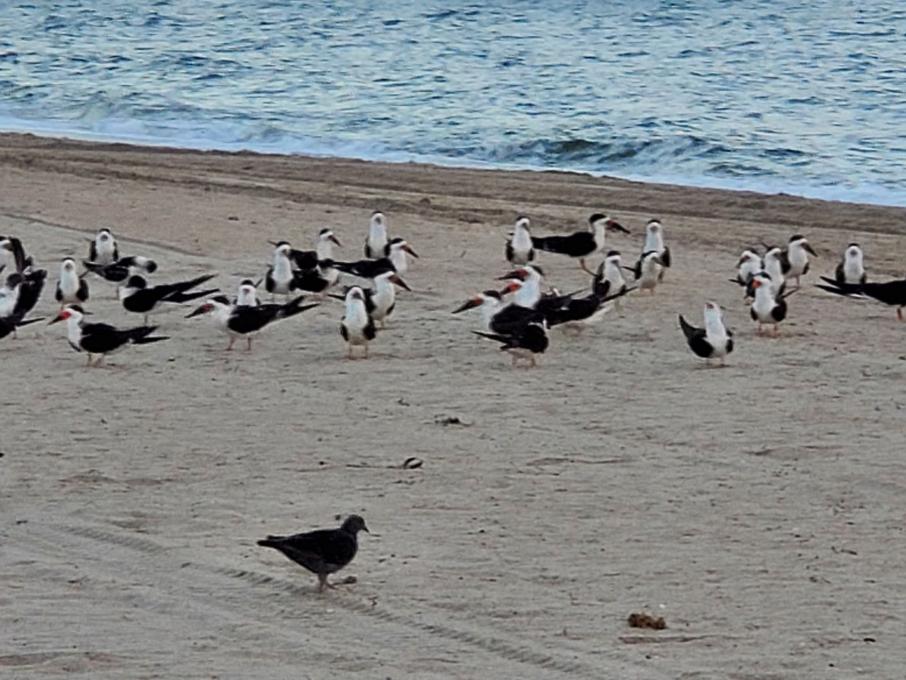 The pigeon landed in the foreground just as I was taking the picture.
The pigeon landed in the foreground just as I was taking the picture. 
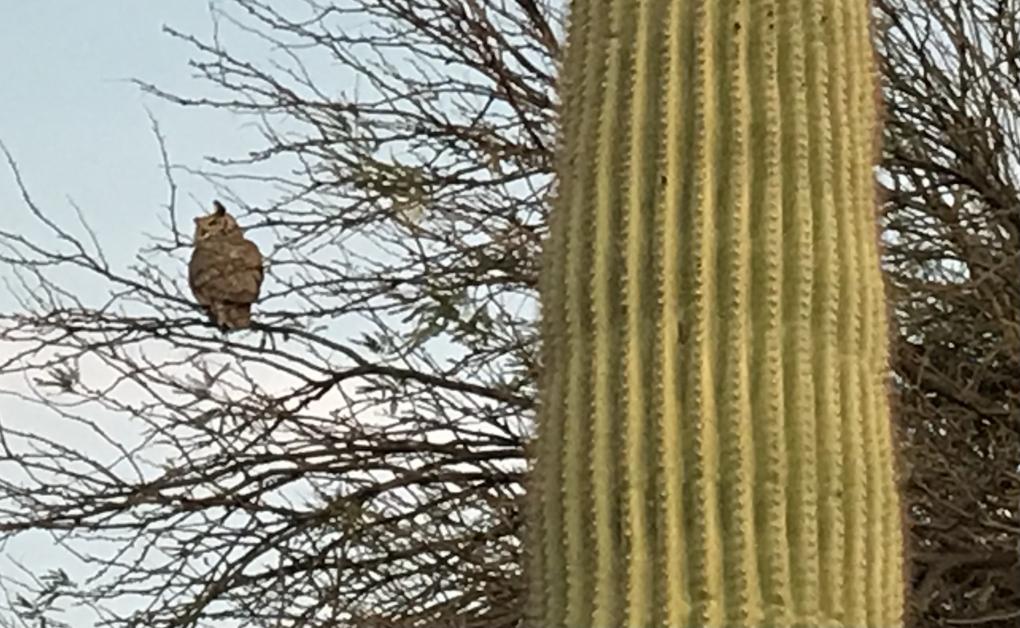
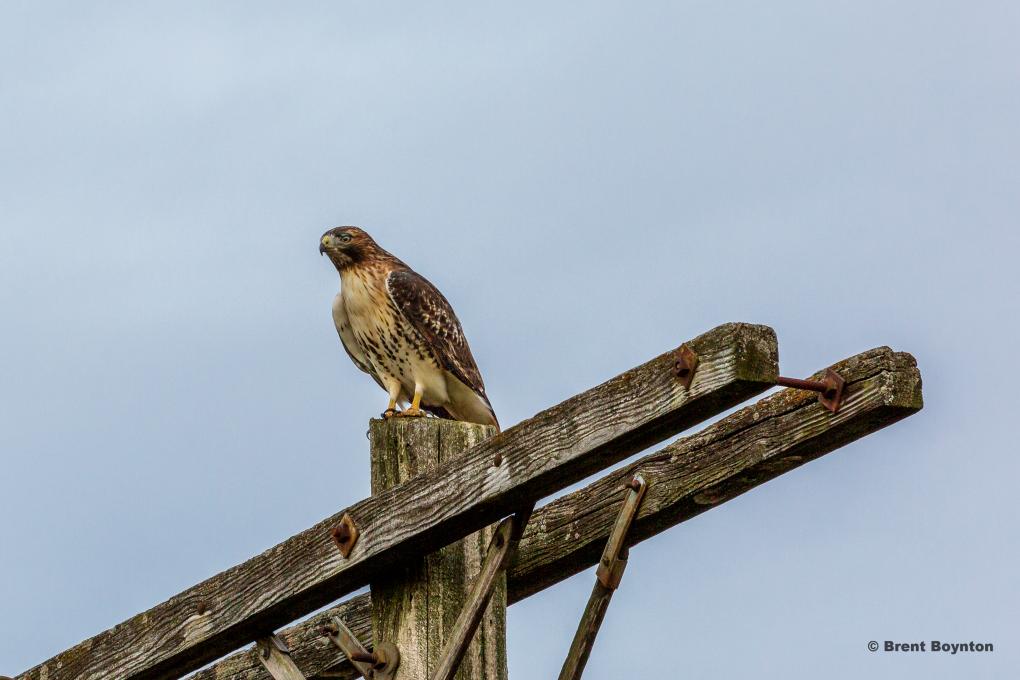

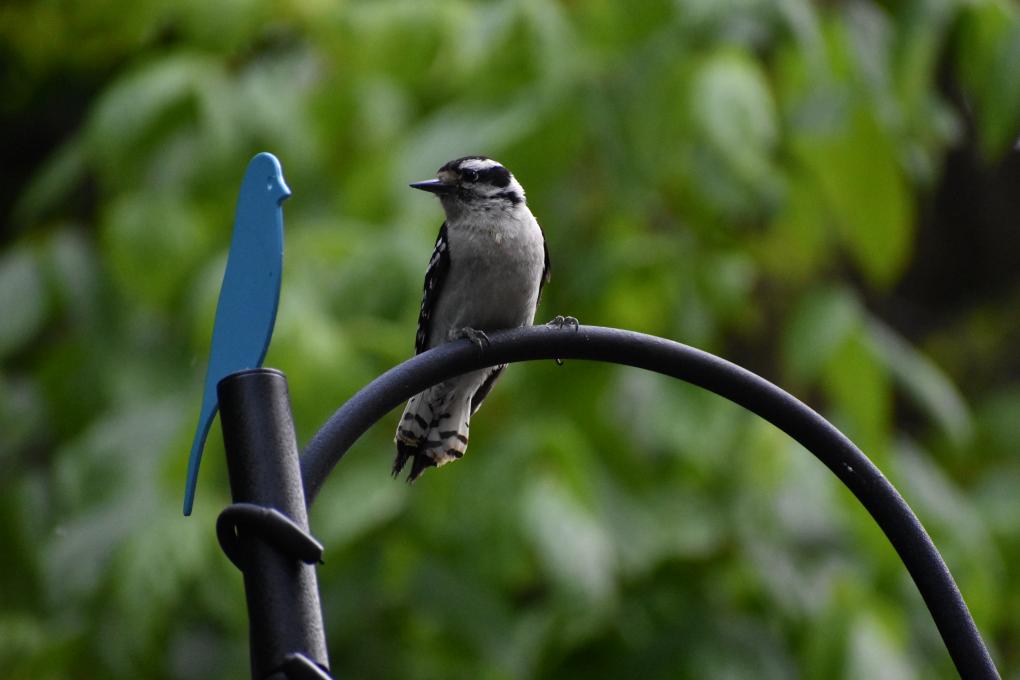
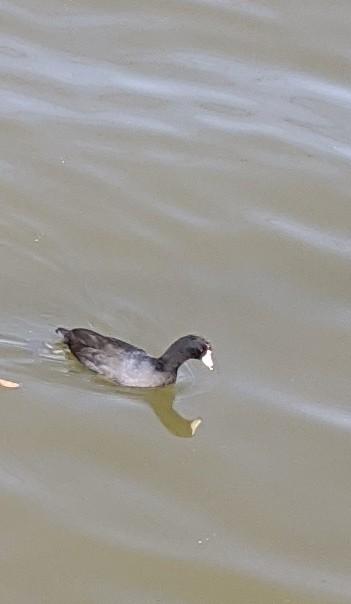 In trying to identify this "duck", I learned about a new bird family the Coots, Gallinules, and Rails. This is an American Coot I saw at White Rock Lake in Dallas, Texas 10/11/20. I plan to spend more time watching the diverse bird population in this area. There is also a wonderful flock of Monk Parakeets in that area!
In trying to identify this "duck", I learned about a new bird family the Coots, Gallinules, and Rails. This is an American Coot I saw at White Rock Lake in Dallas, Texas 10/11/20. I plan to spend more time watching the diverse bird population in this area. There is also a wonderful flock of Monk Parakeets in that area! 
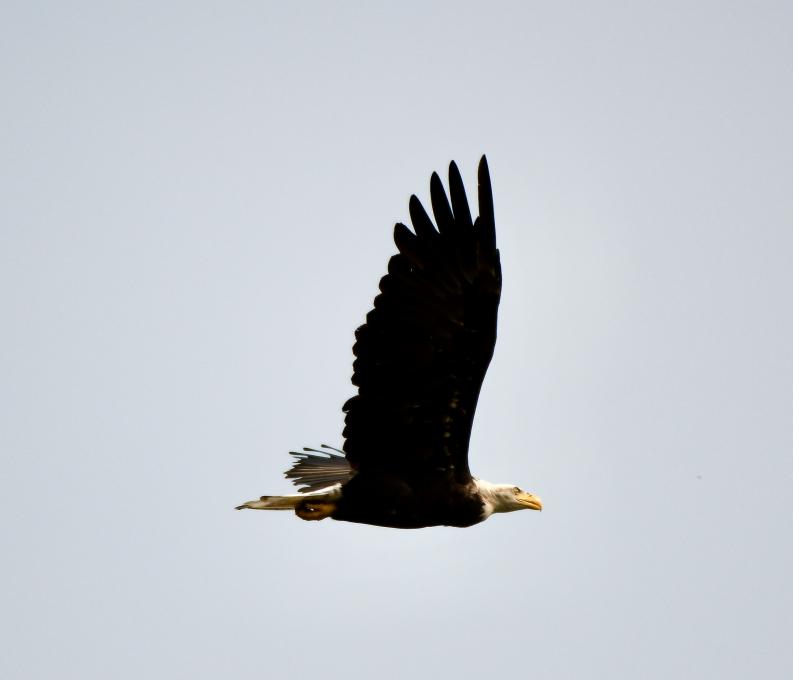
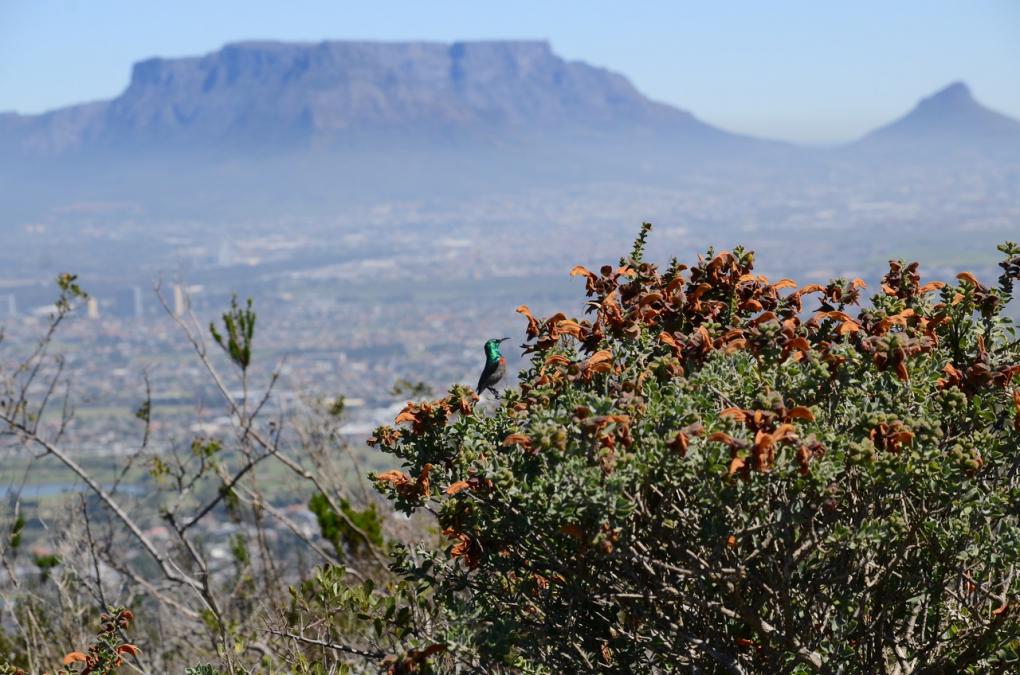 We are lucky to have amazing bird life here in Cape Town. My favourites are the Sunbirds and Mousebirds that frequent my garden, although the latter like to wreack havok in my garden, especially with the granadilla. They are such characters! :) I found them on the wall represented by the Sugarbird and Red-Faced Mousebird in Southern Africa. Yesterday I was super lucky to capture a Double Collared Sunbird with my camera finally - and in front of Table Mountain as well!
We are lucky to have amazing bird life here in Cape Town. My favourites are the Sunbirds and Mousebirds that frequent my garden, although the latter like to wreack havok in my garden, especially with the granadilla. They are such characters! :) I found them on the wall represented by the Sugarbird and Red-Faced Mousebird in Southern Africa. Yesterday I was super lucky to capture a Double Collared Sunbird with my camera finally - and in front of Table Mountain as well! 